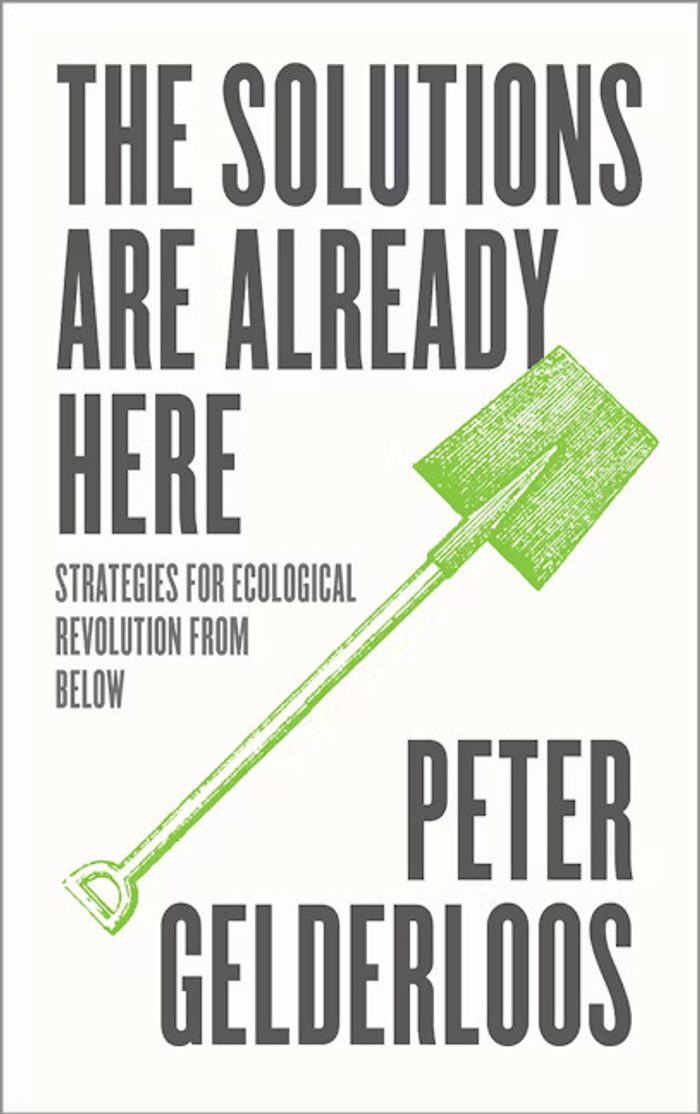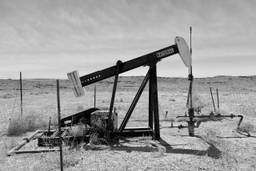Two Years and $300 Billion into Biden’s Climate Plan, Emissions Are Higher than Ever
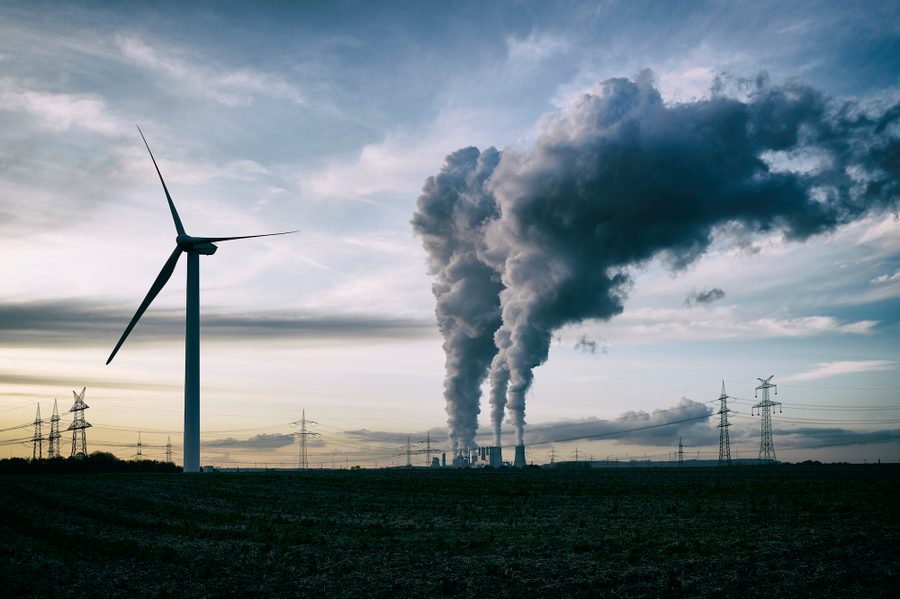
What if the entire international framework around climate change is fatally flawed? Getty Images
Green energy and fossil fuels are rising hand in hand. The growth-based climate framework is fundamentally broken.
August 16 marked the two-year anniversary of the Inflation Reduction Act (IRA), legislation that has funneled hundreds of billions of dollars into green energy and electric vehicles. While the Act made unprecedented investments in renewable energy, it also faced criticism for being too little, too late and for compromising on fossil fuel extraction. In response, Environmental Protection Agency Administrator Michael Regan acknowledged the bill’s shortcomings but explained the administration’s approach: “We’re using every tool in our toolbox to drive down climate pollution as much as possible, as quickly as possible.”
But let’s take this anniversary to entertain a horrifying doubt: What if the toolbox itself is inadequate? What if, on the contrary, all the tools only make a dire crisis even worse? Because that’s exactly what’s happening: Two years and close to $300 billion later, what we’re seeing is that increased renewable energy investment goes hand in hand with increased fossil fuel production.
What’s even more horrifying? Social movements around the world have been predicting this outcome for years or even decades, but they have been shut out of the mainstream conversation. In fact, nobody with any sizable platform is pointing out that the emperor has no clothes, that the entire international framework around climate change is designed to fail.
And while the circus of false solutions keeps getting louder, we have probably already passed the point of no return, meaning carbon saturation and the beginning of a domino effect that will lead to 2.5-5C of global warming, mass extinction, and hundreds of millions or billions of human deaths. (For an overview of the data, check out this supplementary article).
Growth
To understand why more green energy investment is causing an increase in fossil fuel production, let’s look at some numbers.
For starters, let’s examine the U.S. government’s claim of an emissions reduction of 3% in the first full year of the IRA (too little, too late, anyone?).
This miserable reduction wasn’t even the result of robust government intervention: 85% of it can be attributed to power companies burning more gas and less coal as gas prices fall. In fact, what was supposed to be a banner year for green energy actually saw a slight decrease in electricity generation from renewable sources in the U.S. — a failure that belies the supposed magic wand of government intervention.
What’s worse, the 3% reduction isn’t even real. Countries like the U.S. can claim a victory only thanks to the “carbon accounting” practices approved by the Intergovernmental Panel on Climate Change (IPCC) and central to the Paris Agreement framework. This carbon accounting is done country by country (as if ecological catastrophe respected borders) and a country’s footprint is measured by the greenhouse gas emissions of what they consume, not what they produce.
So what does that mean? It means the United States can increase natural gas production and break all global records in crude oil production in 2023 and, in the same year, claim an emissions reduction. It also means that, globally in 2023, fossil fuel emissions went up.
And it’s not only the United States. Let’s look at some countries held up as poster children of “green growth” by global economic institutions and environmental organizations: Sweden, Norway and Chile. Because none of these rank in the world’s top 20 biggest economies as measured by GDP (the closest is Sweden, at #23), let’s also throw in the United Kingdom, since it is the sixth largest economy in the world, it generally ranks in the top ten or top fifteen in the world for sustainability and the transition to renewable energy, and it gets trotted out by the media as an example of green growth.
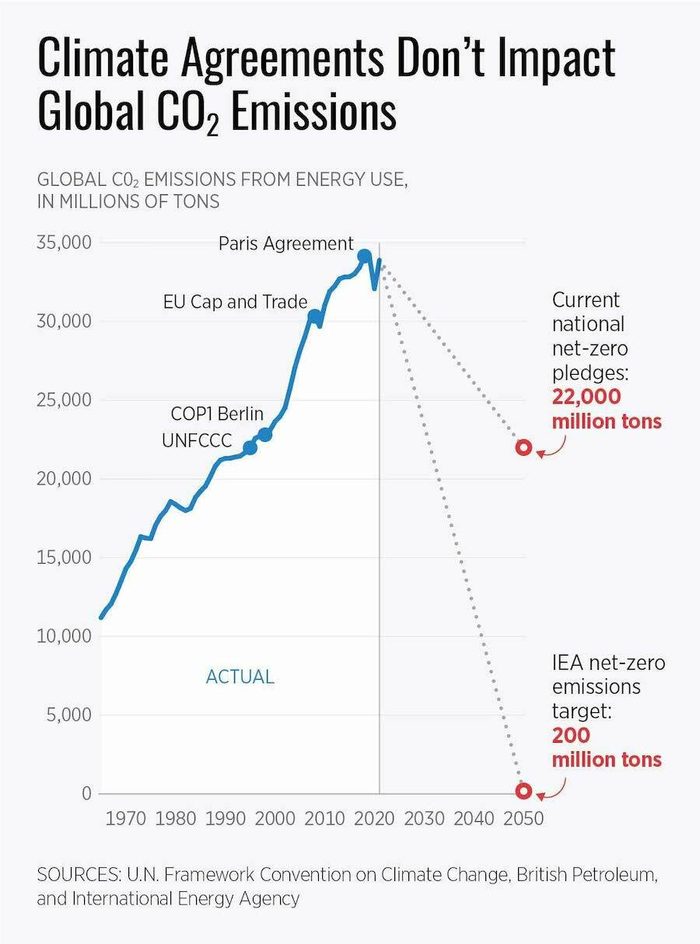
What kind of facts jump out at us? All these countries have economies that are deeply ecocidal, while the changes they have introduced are largely either cosmetic or for the benefit of their own citizens at the expense of the rest of the world. Sweden, for example, is often celebrated for its green economy, but 33% of that economy is constituted by an export-focused industrial sector based in mining, logging, automobiles, machinery, telecommunications and military armaments. Because its manufactured goods are exported, the energy necessary for their production is not counted in the country’s emissions balance. Norway, meanwhile, is lauded for transitioning to a domestic energy supply that is mostly nuclear or renewable. And yet, this Scandinavian country is the largest oil and gas producer in all of Europe, with fossil fuel production and export making up 20% of its economy. But Norwegians can rest easy: Nearly all of that gas is sold to be burnt elsewhere.
As for the U.K., it’s frequently held up as an example of a large economy that has successfully decoupled economic growth from carbon emissions, but it’s also in the top fifth of oil and gas producers in the world. It’s a major exporter and manufacturer, with automotive, pharmaceuticals and aerospace production being especially important. This includes the high-pollution airplanes essential to tourism, global travel and global militaries, as well as rockets and satellites with military, surveillance and communications applications.
Then there’s the financial services sector, which contributes close to 10% of the U.K. economy’s gross value. When it comes to finance on this scale, we never have to look far to find connections to the fossil fuel industry, the military industrial complex and other institutions of exploitation, misery, and environmental destruction. Take, for example, HSBC, the U.K.’s largest bank. It has been implicated in money laundering for organized crime and drug trafficking, is a major investor in the arms trade and in authoritarian and ecocidal regimes, and was partially responsible for the 2007 mortgage crisis that threw millions of people out of their homes. It’s been linked to toxic disasters, land theft and paramilitary violence against Indigenous communities across the world. And it’s a major financier of coal, oil and gas operations. Its recent plans to divest and become carbon neutral by 2050, aside from being woefully too late, have been found unconvincing and vague by shareholders.
Chile has long vied for the title of richest country in South America and frequently earns praise from advocates of green growth, who need at least one country in the Global South that is not entirely dependent on tourism to deflect the argument that climate solutions based on major investment and state intervention depend on basically throwing poorer countries under the bus. But in Chile, as elsewhere, the happy story of green growth hides an ugly reality. The country has a major logging industry, which has rebranded itself as the “forestry industry.” In the context of climate reductionism, in which everything is reduced to bureaucratic measurements like carbon accounting, this brutally ecocidal sector allows Chile to claim thirty million metric tons of carbon credits annually. The monocrop plantations of non-native eucalyptus and pine trees are biodiversity deserts that are destroying the soil, draining the water table and hastening the day when the soil can no longer be a carbon sink and begins emitting large amounts of carbon and methane. The industry is also based on active campaigns of land theft, both in the form of new seizures targeting specific Mapuche communities and in the form of the democratic government upholding the extensive usurpations of the Pinochet dictatorship. In both cases, the industry relies on high levels of police and paramilitary violence as well as political repression.
This is also the case with the true pillar of the Chilean economy, one of the most destructive and ecocidal practices developed by capitalism — industrial scale mining. In Chile’s case, the main products are copper, rhenium, lithium and molybdenum, most of which are extremely important to the energy sector, including renewables. Others, like rhenium or molybdenum, are also useful for military production, the airline industry and the construction sector.
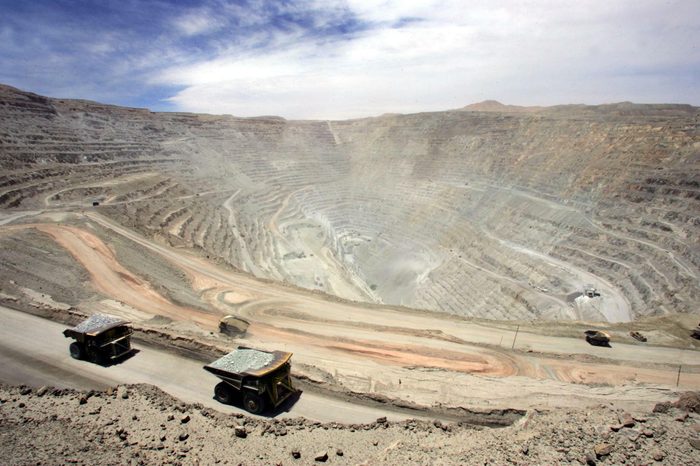
In short, when we look at the countries that are held up as success stories, we find that the green energy transition is being paid for by fossil fuel production. It’s being paid for by the logging and mining industries that deplete and poison our clean water. It’s based on land stolen from Indigenous peoples and policed by human-rights violators. It’s being paid for by military production, the automobile industry and the aviation industry. It’s being paid for by banks and other companies that have their hands deep in the pockets of many of the worst polluters. “Green growth” is a marketing strategy. Nothing more.
Advocates of green growth claim many countries have already “decoupled economic growth from CO2 emissions” but when we look past their colorful graphs, we see they are burying the truth under statistics. They pretend that emissions can be counted country-by-country and ignore the carbon emissions caused by exported fossil fuels, even when those exports are crucial to a country’s economic growth. And they hide rising emissions by counting a country’s emissions per capita rather than counting total emissions. In other words, per person, energy use is becoming more efficient in wealthier countries but those same countries still rely on a growing population — and hence greater total emissions — for their economic growth.
These are all ways of ignoring the truth that, globally, carbon emissions and renewable energy generation are rising hand-in-hand.
Their approach is not only dishonest, but also unreliable for other reasons, all of which can be identified with climate reductionism, the tendency of bureaucrats to reduce complex systems — like the interconnected ecosystems of planet Earth — to simple problems that can be measured by tracking a handful of quantifiable factors. This reductionism is necessary because centralizing institutions like states and corporations do not have the organizational, collective intelligence necessary to understand and be a conscious part of complex systems. As a result, they are utterly incapable of providing solutions to the complex ecological crises we face.
Whatever emissions reductions individual countries have been able to conjure up with accounting tricks, we face a stark reality: Globally, carbon emissions have risen almost 600% since 1950. They rise every year with only a few exceptions that have nothing to do with “green” energy. Emissions have fallen in years when some major crisis has rocked capitalism and economic activity has stagnated or decreased: 1945 (the end of wartime production), 1974 (stagflation caused by the U.S. war deficit and the 1973 energy crisis), 1980-1982 (the largest recession since World War II), 1992 (the economic collapse in the post-Soviet countries), 2009 (the Great Recession), 2020 (the beginning of the Covid pandemic).
The problem is capitalism itself.
Capital exists on a continuum between liquid and fixed. Liquid capital is money in a bank account, stocks, assets like real estate that tend to appreciate and can be quickly sold. Fixed capital is the opposite. It is sunk money. If it was a wise investment, it’s money that will make more money, but the initial investment cannot easily be moved into another form. It’s hard to imagine a more fixed form of capital than a $100 million coal excavator, a $7.6 billion gas pipeline, a $9.4 billion maritime oil drilling operation, or a $6 billion petroleum refinery. If the company that owns those investments stops selling oil or gas, their huge investment is mostly just going to rust. They might even have to pay clean up fees if they can’t pass the cost off to local communities. (Actually, a coal-fired energy plant can be repurposed… to burn other kinds of fossil fuels.)
Fossil fuel companies cannot and will not abandon their massive, fixed investments in fossil fuel infrastructure — they will keep producing fossil fuels. As they face increasing competition from other energy sources like wind or solar, they are doing the only logical thing from a capitalist standpoint: doubling down on investment in fossil fuels, building ever more pipelines and power plants even as the world burns and the waters rise. And, as we’ve seen, this industry is so central to the global economy that governments cannot and will not make them stop.

Green energy could eventually replace fossil fuels rather than spurring an increase in fossil fuels. The problem is, the timeline is completely untenable. Actually ending all extraction and use of fossil fuels—something that should have happened yesterday—does not figure into the plans of any major energy company or major state that I’m aware of until well after 2060, if at all. We simply don’t have that long, and the green growth advocates who try to sell us such a plan are prioritizing a desire to save capitalism over a desire to save life on this planet.
Survival
Growth-based economies by any name have demonstrated they are an enemy to our survival. More green energy is not slowing this catastrophe. What we need is to stop the construction of new pipelines, drilling operations and airports; to end our structural dependency on cars; to recover ecosystemic and localized forms of food production that are inalienable from the communities that rely on them. We need to stop growth-based industry, deepen our relationships with our ecosystems and help them adapt. And we need to abolish all the repressive, capitalist and white supremacist structures that stand in the way of this transformation, like police, prisons and borders. We need to restore real forests, soil, seas and wetlands — this is the most comprehensive way to pull as much carbon out of the atmosphere as possible and mitigate a disaster that is already here.
Our best chance for survival also happens to be the right thing to do: We need to throw our support behind the movements already taking many of the actions described above and that have already proven that their priority is healing our planet, its ecosystems and its inhabitants.
The Mapuche struggle against the settler states of Chile and Argentina is one such movement. They are actively reclaiming their lands from monocrop timber plantations and hydroelectric megadams, while protecting local water resources, restoring forest habitat and native species, and reinvigorating traditional food culture and spirituality. To do so they have had to overcome the repressive violence of police, paramilitaries, right-wing Christian missionaries and NGOs. They have built intentional, international relationships of solidarity with anarchists and others who respect their sovereignty, and they were a major inspiration and participant in the uprising that brought Chile to a standstill in 2020, forcing the government to allow a referendum on a new constitution that at least on paper would have greatly expanded the list of fundamental rights and protections, including on questions of gender, disability, indigeneity and nature.
The Mapuche have also helped reinvigorate Indigenous movements around the world. In North America, these movements have taken the form of key struggles against coal mines and gas pipelines, leading to the cancellation of several fossil fuel projects and showing settler-descendants a clear and effective way to help put an end to settler colonialism (…aside from donating to NGOs and doing land recognitions, of course).
Another movement, the ZAD (Zone to Defend) in France, showed we could stop an airport and protect small farms and free the land from profit-oriented, high-emissions megaprojects. As with the Mapuche, the Zadists were only able to win by overcoming extreme police violence. The ZAD was so inspiring that over a dozen others popped up throughout France, Switzerland, Belgium and beyond, some of them stopping mines or other destructive development projects.
Anti-police rebellions — from Oaxaca to Athens to Oakland to Bristol, from France to Tunisia and Egypt, from Gezi Park to George Floyd Square—have demonstrated that we are strong enough to take over neighborhoods or whole cities, sometimes for days, other times even for months or years. These uprisings have highlighted the synergy between antiracist resistance and the demand that cities be designed for the needs of their inhabitants instead of the needs of capital. They have also demonstrated a potentially life-saving capacity to quickly transform our vital spaces, by creating gathering places to collectively heal from the genocidal violence of anti-Blackness and settler colonialism, turning vacant lots into gardens, or making our neighborhoods car-free zones.
You can read about these movements and more in much greater detail in my books The Solutions Are Already Here and They Will Beat the Memory Out of Us.
These movements are heterogeneous, held together by solidarity, not
the unity of a party or the exclusion from decision-making that is
exercised by the NGOs and governmental bodies of the official climate
framework. This solidarity and heterogeneity encourage debate, parallel
experimentation with different and localized strategies, and
decentralization — all of which contribute to a collective intelligence
that is far superior to the clunky reductionism of centralizing,
hierarchical structures. We don’t have all the answers, but we have a
method that is working and needs more support. These movements will fail
unless more people stand beside them, prevent their marginalization,
spread their practices, find continuity in the face of exhaustion, and
help participants flee and put down roots in safer ground when the
violence of repression becomes too intense.
These movements are intersectional. Rather than siloing every problem into a single issue dominated by experts, we encourage one another to explore how interconnected all these oppressions and disasters are. By doing so we create a more complex and historically grounded understanding of our situation, while also strengthening the global communication and solidarity we need for effective action.
We are not claiming to have won permanent victories, but these movements have shown a persistent ability to block extractive megaprojects and to defeat the forces of repression that protect a genocidal status quo. These movements make us all stronger, healthier, smarter and more resilient.
The choice is yours: Will you entrust your survival to the same institutions causing this apocalypse — or will you join the movements actually building survival and leading the way out of this nightmare?
Editor’s Note: for more of the data and research behind this article, check out this supplementary piece on the author’s Substack.
SPECIAL DEAL: Subscribe to our award-winning print magazine, a publication Bernie Sanders calls "unapologetically on the side of social and economic justice," for just $1 an issue! That means you'll get 10 issues a year for $9.95.
Peter Gelderloos is an independent researcher, writer, gardener and social movement participant. He is the author of The Solutions are Already Here: Strategies for Ecological Revolution from Below, How Nonviolence Protects the State, Anarchy Works, Worshiping Power: An Anarchist View of Early State Formation, and the forthcoming They Will Beat the Memory Out of Us. His works have been translated into fifteen languages.
